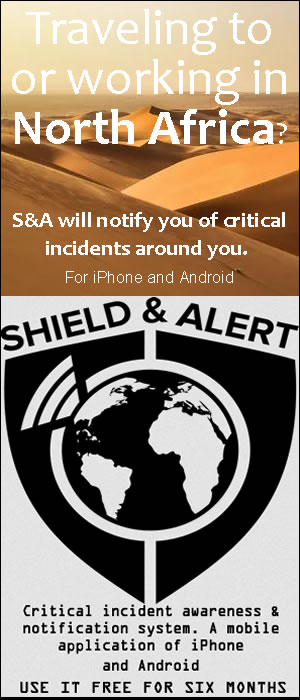In this brief podcast recorded on 12 November 2020, MEA Risk’s Arezki Daoud provides an update on the Coronavirus in the Maghreb region. The state of the Covid-19 epidemic in the Maghreb looks rather bleak as we are reaching the mid-point of November 2020. As in during the Spanish flu pandemic, the Covid-19 virus is back with a vengeance in what could be a second wave. Newspapers in 1919 reported very similar patterns, whereby a second wave in fall and winter turned out to be deadlier than when the pandemic was confirmed in early 1918. Here is a quick snapshot of Maghreb countries as of 12 November 2020.
Transcript
The state of the Covid-19 epidemic in the Maghreb looks rather bleak as we are reaching the mid-point of November 2020. As in during the Spanish flu pandemic, the Covid-19 virus is back with a vengeance in what could be a second wave. Newspapers in 1919 reported very similar patterns, whereby a second wave in fall and winter turned out to be deadlier than when the pandemic was confirmed in early 1918. Here is a quick snapshot of Maghreb countries as of 12 November 2020.
Algeria has crossed the barrier of 800 daily Covid-19 cases in a continued upward movement of the pandemic. On 11 November 2020, 840 new infections were identified, according to health authorities. The figure was up from the previous day’s number of 753, a near 12% increase just in one day. These new cases bring the cumulative count of people infected by Covid since the start of the epidemic to 64,257, a figure that likely represents a small proportion of the real infection figure. The Wednesday data also shows 16 deaths that day, bringing the total human loss to 2,093.
Hospital data from the National Institute of Public Health (INSP) shows an 88.7% increase in the hospitalizations of patients who tested positive from 30 September to 30 October 2020. The increase, which confirms the ongoing flare up of the virus, affected all provinces of the country. INSP says the north-central provinces saw hospitalizations increase by more than 98% in October, followed by northeastern provinces at 84.7%.
As a result, Algeria has taken new measures to contain the ongoing surge, including the reinstatement of a night curfew in nine additional provinces and the postponement of the start of the university year. In total, 12 measures were announced on Sunday, 8 November in a statement issued by Prime Minister Abdelaziz Djerad. The first measure concerns the lengthening of the home confinement period from 8 p.m. to 5 a.m. (instead of 11 p.m. to 5 a.m.) in 29 provinces, nine of which were added on Sunday. The government has also decided to close all vehicle markets for a period of 15 days, banned public and family gatherings, postponed the start of the university year and that of vocational training until 15 December. The Algerian authorities intensified cleaning and sterilization operations of public spaces and buildings, and increased spot inspections of schools, mosques and businesses to verify the application of anti-Covid measures.
Also authorities in a dozen provinces have decided to close primary and secondary schools where students, teachers and other staff have tested positive to the Covid-19 virus. Education authorities say they are extremely concerned by the extent of the spread of the virus in schools.
In Algiers, the Minister of Religious Affairs has decided to freeze the weekly prayer service at the newly opened Grand Mosque of Algiers, starting Friday, 13 November 2020. A special commission on the impact of Covid-19 in mosques expressed its reservations on the respect of the sanitary protocol, telling the Prime Minister that Friday services have attracted large numbers of worshipers who disregarded the physical distancing rules and other measures aimed at preventing the spread of the virus.
Morocco is also experiencing an unprecedented level of contamination. On 11 November 2020, more than 5,400 people tested positive to the virus, resulting in cumulative count of about 271,000 cases since the start of the pandemic. In all, Morocco lost 4,500 people to the disease and nearly 1,000 people today are said to be in critical condition. Naturally, the biggest urban centers are where the virus tends to concentrate the most, with Casablanca region accounting for the highest number of cases. But also, as anywhere else, the virus appears to have spare no region and has blanketed the entire country.
In the northeast of the country, where the city of Oujda is located, public health authorities say the most vulnerable population remains the elderly and those with underlying conditions, resulting in the worsening situation in the region. Lack of rapid access to hospitals means that many people with Covid symptoms delay visiting existing hospitals and by the time they get there, it may be too late. The average age of those who die from Covid in the sub-region is 65.
Last week, the Moroccan government decided to extend to 10 December, the state of health emergency, in force since mid-March, for one month to stem the spread of the Coronavirus pandemic. Announced for the eighth time, the state of health emergency authorizes the government to take exceptional measures to limit the repercussions of the pandemic at several levels such as the gradual relaxation of containment, the evolution of the epidemiological situation and the disparities observed between the different regions of the Kingdom.
Casablanca, the economic capital with more than three million residents, local media regularly report the possibility of a new confinement. Schools in Casablanca have reopened but the curfew remains in force, as do the travel restrictions. Restrictions also concern other cities, such as the tourist capital Marrakech or the large port of Tangier. Over a million students are forced to take online education across the country.
Although the country’s borders are still closed, foreign visitors doing business in Morocco or who can show a hotel reservation have been allowed to enter the country since mid-September, but authorities require incoming travelers to show a negative PCR test upon entry.
King Mohamed VI announced on Monday the launch of a “massive vaccination operation” against Covid-19 in the coming weeks, but the details remain sketchy.
In Tunisia, authorities decreed in late October a nationwide night curfew and closure of schools to contain the spread of the coronavirus. According to official figures, the number of contaminations by the coronavirus is of the order of 2,047 cases in schools, including 538 students and 954 teachers. Prime Minister Hichem Mechichi also announced a ban on travel between governorates, except for professional reasons and exceptional cases. Gatherings of more than four people prohibited. Tunisia, a country of 11 million people, has officially recorded more than 1,000 cases per day in recent weeks as hospitals struggle to cope with the influx of patients. On 10 November, the infection figure was 1,529, confirming an upsurge in cases. A total of 74,522 cases have been officially recorded as of 10 November, resulting in 2,100 deaths. PM Mechichi even ventured to predict the death toll from the coronavirus could reach 7,000, as hospitals are unable to cope with a spike in demand.
The national tally of identified infections in neighboring Libya was over 70,000 as of 11 November, with 970 new cases that day. The cumulative death count was 957 as of 11 November. Since the first case was reported in March, and despite the political crisis, Libyan authorities have taken a series of precautionary measures against the pandemic, including closing the country’s borders, shutting down schools and mosques, banning public gatherings and imposing a curfew. Affected by political instability, Libya is increasingly relying on its Tunisian neighbor for help. Tunisia and Libya have reached an agreement to adopt a common health protocol for the fight against the coronavirus epidemic. Set to enter into force next week, the agreement aims to facilitate the movement of people but also of goods and services between the two countries. Contacts are also currently underway with a view to rescheduling air flights between Tunisia and Libya.
In closing, it is clear the western and central part of North Africa is experiencing a very fast community spread of the COVID-19. Efforts to contain it are underway but I have to say we should be concerned by the state of readiness of public and private hospitals, the infections that are crippling the medical staffs, the saturation we are seeing in hospitals, and of course the messaging coming from governments on how to deal with the epidemic. Of concern, is the announcement by Morocco that a nationwide vaccination campaign is to take place in the coming weeks. It is unclear how Morocco reached that decision considering that vaccines are not ready, unless of course the Chinese and Russian vaccines are deployed in Morocco despite the risk of not enough testing.
We should also be concerned about overall transparency in the way governments share information about the pandemic. Algeria in particular is showing infection numbers that are not reflective of the reality on the ground. The figure of 800 infections a day, even as big as it is, is most likely, at least, half of what the real figure is. It is inconceivable that Morocco, a country with about the same population profile as Algeria’s, reports more than 5,000 case a day, versus 800 for Algeria. The difference may reflect Morocco testing far more than Algeria.
Regardless, the region should brace for a difficult end of year. Hospitalizations generally come before deaths spike and so with saturated hospitals, we should prepare for real bad death numbers when December comes.








